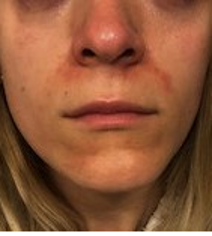There is a great deal of medical information covering the importance of diagnosis and treatment of COVID-19 infection. After days or weeks of suffering mild to severe symptoms, then struggling to regain health, you may not know what to expect from the persisting inflammatory effects of the virus. Medical professionals are learning as many, that COVID-19 has no hard and fast rules when it comes to recovery.
For SARS-COV-2 positive (tested) patients not requiring hospitalization, post-COVID-19 symptoms may occur in at least 20% of patients (CDC.org). These symptoms may remain three weeks with some health issues lasting up to three months or more. An article posted in The Lancet January 2021 describes more severe and persistent post-COVID-19 symptoms occurring in hospitalized patients that could last up to six months or more. According to the CDC.org, up to 94% of hospitalized patients will experience post COVID-19 recovery issues and 1 in 5 previously healthy people who tested positive for COVID-19 were not back at work for 14-21 days after hospital discharge.
As you can imagine, in our primary care clinics, we see all ends of the spectrum.
Below is a compilation of the most common post-acute COVID-19 symptoms (in declining frequency) that should be brought to the attention of your primary care provider:
- Fatigue: 71%: sometimes the fatigue would extend beyond six months of positive test
- Cough with or without shortness of breath: 61%: follow up chest films or further studies to rule out lung or heart complications may be needed. Many patients require oxygen supplementation and pulmonary specialty care follow up. Commonly, steroid inhalers are needed during this phase of recovery for anti-inflammatory benefits.
- Headache 61%: exceptionally common with COVID-19. Interesting, this painful side effect may respond to common migraine-specific prescription medications such as Imitrex or Zomig.
- Body aches: These usually respond to anti-inflammatories or acetaminophen.
- Fever: Testing for strep infection or Influenza is important for ongoing fever (I have had one patient with concomitant Flu-Vid which was terrible).
- Chills: Generally, goes away when fever resolves.
- Loss of taste: Median days to recovery: 8; but may take 3 months or more.
- Diarrhea: Need I say more? Fluids such as G2 (low sugar), Powerade, or Pedialyte (less tasty) may be helpful. The World Health Organization (WHO) has a home-made electrolyte formula that is simple to compile.
- Nasal congestion: Over the counter decongestants tend to provide some relief. Nasal saline mist or gel may keep the nostrils moist and more comfortable.
- Shortness of breath: it is important to rule out lung or heart issues and medical attention is generally necessary. Always notify the medical team of you symptoms so they may prepare and protect themselves. Call 911 if urgent.
- Nausea with or without vomiting: may need to be addressed alongside a gastroenterologist if symptoms progressive and persistent
- Sore throat: In smokers especially, persistent sore throat may require an Ear Nose and Throat specialist evaluation.
- Chest pain: highly important to rule out COVID-associated or underlying lung or heart condition or blood clots.
- Abdominal pain: Radiology imaging or gastroenterology referral may be necessary. I did manage a COVID-pneumonia patient who also had diverticulitis (colon infection).
- Confusion: Complete neurological studies, imaging, and possible neurology referral may be needed due to the adverse effects of COVID-19 on the central nervous system. It is also important to rule out depression, chronic insomnia, and post-COVID-19 anxiety. The help of a mental health expert could be vitally important in recovery.
COVID-19 follow up changes as the disease becomes more familiar to health care providers. Do not hesitate to share your concerns with the medical team. Currently, our eyes are wide open to the possibility that most anything is possible post-COVID. What is very probable, however, is that we can defeat this disease with proper safety protocols and wide-spread vaccinations. Every shot in the arm counts towards eradication of this terrible virus.

